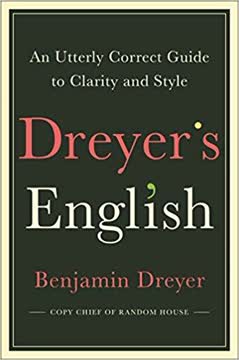Key Takeaways
1. X-ray reading: See beneath the surface of great literature
"Where do writers learn their best moves? They learn them from a technique I call X-ray reading."
Developing literary X-ray vision. X-ray reading involves looking beyond the surface of a text to examine the underlying craft and technique. Like a doctor using X-rays to see inside the body, readers can peer beneath the words on the page to understand how great writers achieve their effects. This technique allows you to:
- Observe the "machinery of making meaning" that is invisible to casual readers
- Identify strategies for creating clarity, suspense, humor, epiphany, and emotional impact
- Recognize patterns in how authors construct sentences, paragraphs, and overall narrative structure
By practicing X-ray reading, you can build a toolbox of writing techniques to apply to your own work. The goal is not just to appreciate literature more deeply, but to learn from master craftspeople and elevate your own writing.
2. Analyze word choice and sentence structure for deeper meaning
"The Queen, my lord, is dead."
Deconstructing powerful prose. Every word choice and grammatical decision an author makes can contribute to the overall effect of a passage. When X-ray reading, pay close attention to:
- Word choice: Connotations, multiple meanings, sensory details
- Sentence structure: Length, complexity, rhythm, emphasis
- Literary devices: Metaphor, alliteration, repetition, etc.
For example, in the quoted line from Macbeth, Shakespeare's word order places emphasis on "dead" at the end, creating a stark, powerful effect. The brevity of the sentence mirrors the finality of death. By examining such choices across many great works, you can develop an eye for impactful writing at the sentence level.
3. Examine how authors build tension and suspense
"The grandmother didn't want to go to Florida."
Crafting narrative momentum. Great writers carefully control the flow of information to keep readers engaged. When X-ray reading, look for techniques like:
- Foreshadowing: Subtle hints of what's to come
- Delayed revelation: Withholding key information
- Pacing: Alternating between fast and slow passages
In Flannery O'Connor's "A Good Man is Hard to Find," the opening line subtly foreshadows conflict. Throughout the story, O'Connor plants "dragon's teeth" - small details that will grow into major plot points. By studying such techniques, you can learn to structure your own narratives for maximum impact.
4. Study how writers create vivid imagery and atmosphere
"Fog everywhere. Fog up the river, where it flows among green aits and meadows; fog down the river, where it rolls defiled among the tiers of shipping, and the waterside pollutions of a great (and dirty) city."
Painting with words. Masterful writers use language to create rich, immersive worlds. When X-ray reading descriptive passages, consider:
- Sensory details: Sights, sounds, smells, textures
- Figurative language: Metaphors, similes, personification
- Rhythm and repetition: How the flow of words mirrors the scene
In this passage from Dickens' Bleak House, the repetition of "fog" and the accumulation of details create a palpable atmosphere. The language mimics the pervasive, creeping nature of the fog itself. By studying such techniques, you can enhance your own descriptive writing.
5. Explore the power of repetition and variation in prose
"Each night, without fail, she prayed for blue eyes."
Layering meaning through echoes. Skilled writers often use repetition to reinforce themes or create rhythmic effects. When X-ray reading, look for:
- Repeated words or phrases
- Variations on a theme
- Parallel structures
In Toni Morrison's The Bluest Eye, the repetition of "blue eyes" throughout the novel reinforces the theme of internalized racism. Morrison varies the context and phrasing to avoid monotony while maintaining the motif. By studying such techniques, you can learn to use repetition effectively in your own writing.
6. Uncover hidden connections between texts through intertextuality
"When I opened my eyes, it was morning. All the lamps in the room were still blazing and I was under the covers with no memory of how I'd gotten under them."
Recognizing literary echoes. Great writers often draw inspiration from or allude to other works. When X-ray reading, be alert for:
- Direct references to other texts
- Structural similarities to classic stories
- Thematic parallels across different works
In this passage from Donna Tartt's The Goldfinch, the dream sequence echoes similar moments in works like Harry Potter, where characters see visions of lost loved ones. Recognizing such connections can deepen your understanding of literature and inspire your own creative borrowings.
7. Apply lessons from masterful writers to improve your own craft
"Study the moves of writers you admire and imitate that work. Without plagiarizing, look for ways to imitate that work."
Learning from the masters. X-ray reading is not just an academic exercise - it's a practical tool for improving your own writing. To apply what you've learned:
- Keep a notebook of effective techniques you encounter
- Practice imitating specific aspects of great writing (sentence structure, descriptive techniques, etc.)
- Analyze your own work with the same X-ray vision to identify areas for improvement
Remember that all writers learn by reading. By consciously studying the craft of great authors, you can accelerate your own development as a writer. Over time, the techniques you've absorbed will become part of your natural writing voice.
Last updated:
Review Summary
The Art of X-Ray Reading receives mostly positive reviews, praised for its insightful analysis of literary techniques and its potential to enhance both reading and writing skills. Readers appreciate Clark's close examination of classic texts, revealing hidden depths and nuances. Some find it eye-opening and useful for teaching literature. Criticisms include repetitiveness, limited scope of texts, and occasional overanalysis. While some readers found it transformative, others felt it was better suited for aspiring writers or literature students rather than general readers.
Similar Books







Download PDF
Download EPUB
.epub digital book format is ideal for reading ebooks on phones, tablets, and e-readers.









